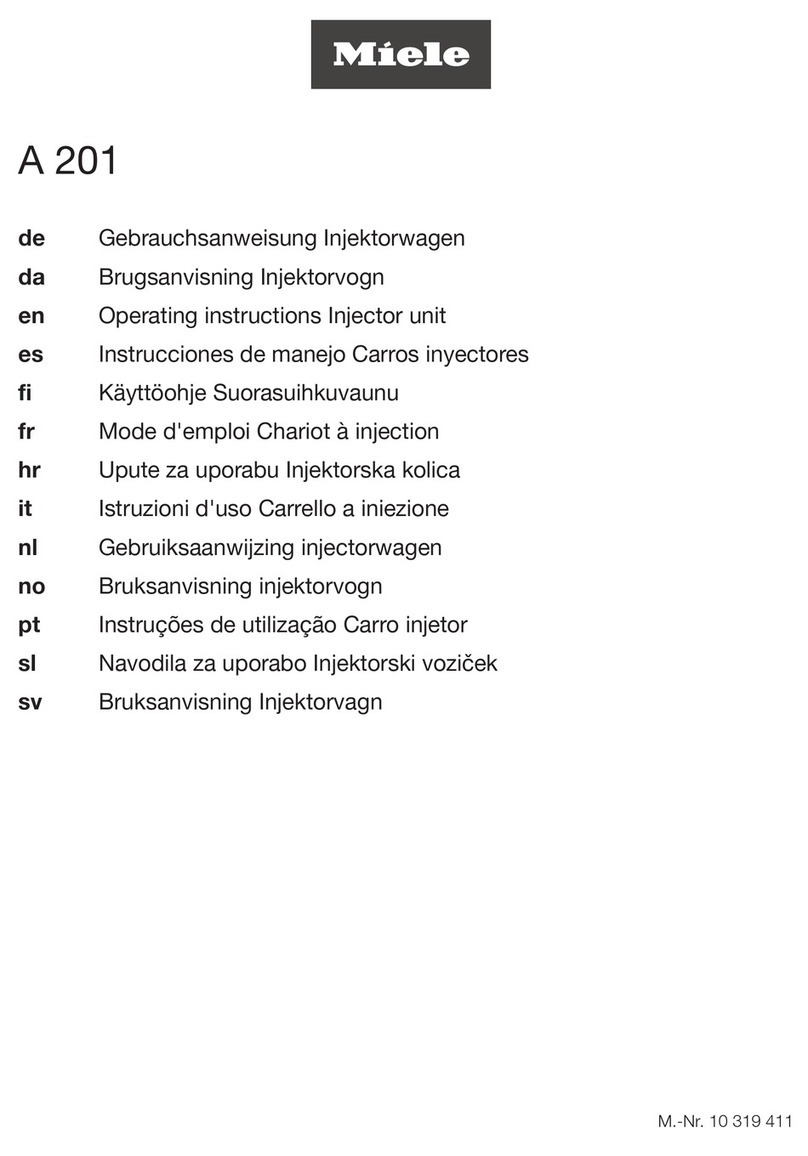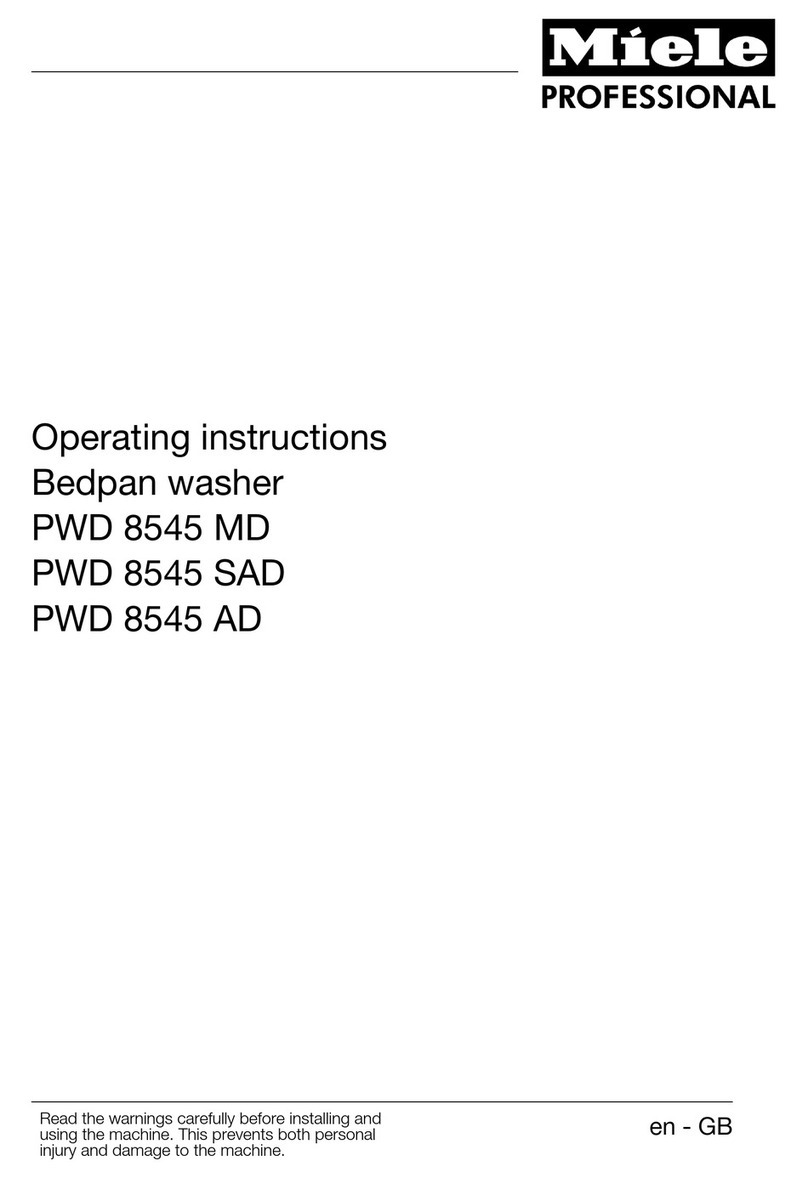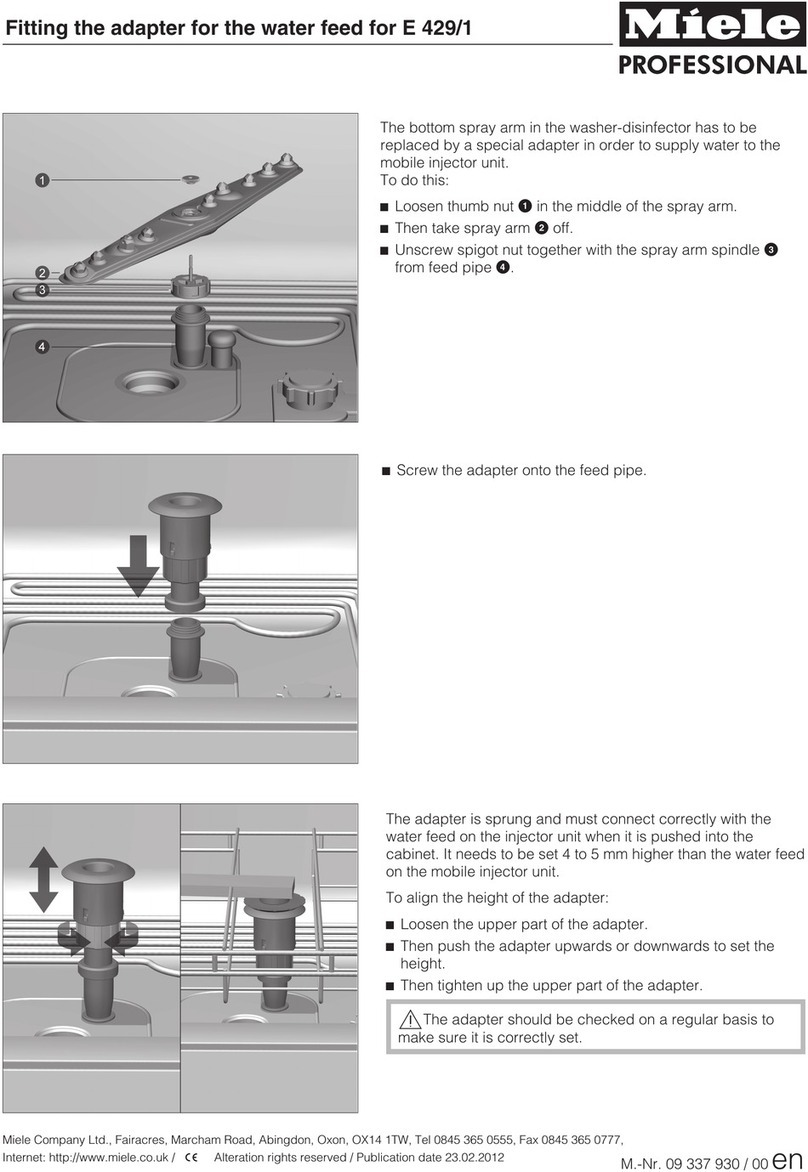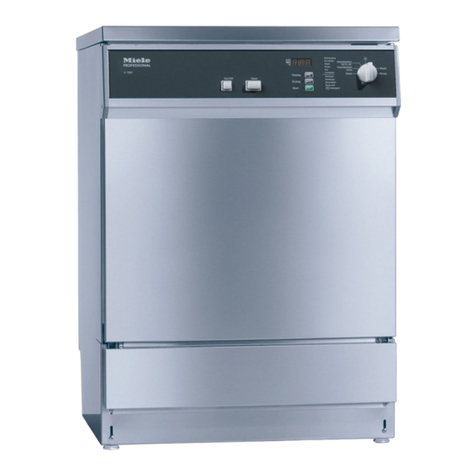
Powered by TCPDF (www.tcpdf.org)
4MUW216743-2
2.1. Introduction
This PG 8581 Washer Disinfector is a Class IIb medical device
(Medical Device Regulation (EU) 2017/745). It complies with
EN ISO 15883 for validation purposes.
The Washer Disinfector can be used to clean, rinse and
thermally disinfect and dry a wide range of reusable medical
devices for dental use.
Examples of instruments suitable for cleaning and
disinfecting in the washer disinfector include:
Stainless steel scalers, spatulas and haemostats,
stainless steel retractors, needle holders, skin hooks,
tissue forceps, scissors, curettes, and other stainless
steel instruments free of deep cavities.
For best results, instruments processed in the washer
disinfector should have the following properties:
• Heat resistance to a temperature up to 95˚C
• Corrosion resistance in the presence of heat and
alkalinity
The Eschmann Dental or W T D programme must be chosen
to ensure eective cleaning of instruments.
The cleaning result must ensure that items can be
disinfected correctly and subsequent sterilisation can be
carried out.
The use of a suitable carrier (basket, module, insert, etc) is
important to ensure the adequate cleaning of the load.
Only medical and dental instruments displaying the thermo-
washer symbol or possessing a manufacturer’s statement of
suitability can be processed in this washer disinfector.
2.2. Liquid Chemicals & Water
Softener
The use of liquid chemicals and a water softener helps to ensure
that the water in the cleaning process is free from deposits.
Only use approved chemicals formulated for use in Washer
Disinfectors. We only recommend and supply liquid chemicals.
The recommended chemicals have been carefully selected
to provide excellent cleaning and outstanding material
compatibility with a wide range of metals and coatings.
Take care when handling chemicals as they may contain irritant or
corrosive ingredients. Always wear protective gloves and goggles.
With all chemicals and specialised products, always observe the
manufacturer’s safety conditions and follow the manufacturer’s
instructions.
Using unsuitable chemicals could adversely aect items being
cleaned and components in the machine. Where a cleaning
agent is recommended on technical application grounds (e.g.
a chemical), it does not imply that Eschmann or Miele takes
responsibility for the eect of the chemicals on the items
being cleaned. Be aware that changes in formulation, storage
conditions, etc. can have a negative eect on the cleaning result.
Chemicals must only be used for the purpose they are designed
for and in the situation specied. Avoid mixing with other
chemicals to avoid dangers such as chemical reactions and
material damage.
The machine is designed for operation with water, salt, and
additive chemicals only. Organic solvents must not be used in
the machine as under certain circumstances there is a danger of
explosion.
(Although this is not the case with all organic solvents, other
problems could arise with their use, for example damage to
rubber and synthetic materials).
If the chemicals are changed to a dierent type, it is important
to ush out the original chemicals from the machine’s system. If
this is not performed, cross contamination could occur and this
may cause damage to the machine.
2.3. User Proles
Daily Operators
Daily operators must be instructed in operating and loading the
washer-disinfector and trained regularly to guarantee safe use..
They require knowledge of automated reprocessing of
medical devices and the relevant daily and weekly testing
regimes. Refer to Appendix 5.
Administration
More advance tasks, e.g. interrupting or cancelling a
programme, require more detailed knowledge about the
machine reprocessing of medical devices.
Alterations of adaptations of the washer-disinfector, e.g.
components used or on-site conditions require additional
specic knowledge of the washer-disinfector.
Validation processes assume specialised knowledge about
machine reprocessing of medical devices, the processes
involved and applicable standards and legislation.
Administrative settings are located in the Settings menu.
2. Intended Use
1.1. UK Distributor Information
This machine has been supplied by Eschmann Technologies Ltd.
who are the appointed distributor for the Miele Company in
the UK. All equipment supplied by Eschmann is supported by
its nationwide network of fully trained engineers, providing
prompt and reliable maintenance and repairs, using only
high quality original spare parts.
1. Introduction
1.2. About this Supplementary
This Supplementary Information Document has been
created to supplement the Miele PG 8581 Operating
Instructions supplied with this machine and covers the UK
requirements of HTM 01-05 and SDCEP.
It provides essential information to help you with
routine tasks and minor issues you may encounter. This
Supplementary Information Document is not intended to
replace the Miele PG 8581 Operating Instructions which
contains all the information you might require to operate
your PG 8581 Washer Disinfector.
Information Document































